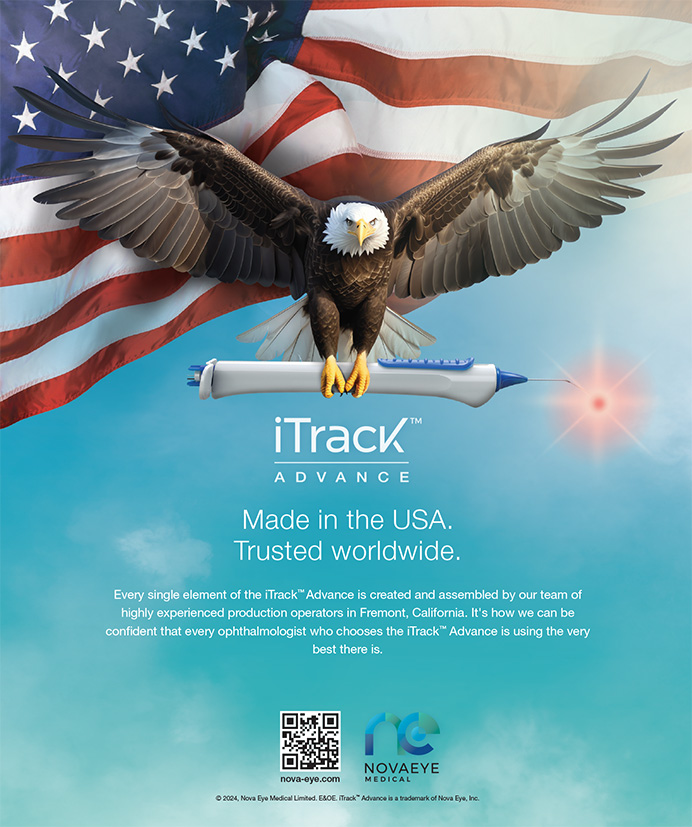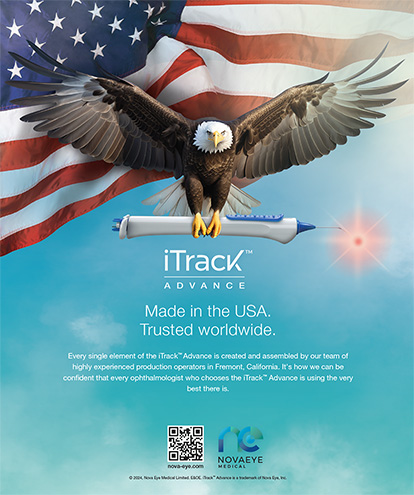The progression of age-related macular degeneration (AMD) can lead to a decline in the ability to see fine detail and a loss of central vision in one or both eyes. Every day, more than 15 million senior citizens in the United States live with the increasingly debilitating effects of AMD.1 Advanced AMD has been shown to increase stress and depression and also creates difficulties for patients in managing the tasks of daily living.2
In addition to AMD being the number one cause of severe vision loss and legal blindness in adults over the age of 60 in the United States, as the population ages and the baby boomers advance into their 60s and 70s, the prevalence of AMD will increase. It is estimated that 14% to 24% of the US population aged 65 to 74 years and 35% of people aged 75 years or more will have the disease.1
Until recently, there have been few options to offer patients who progress to advanced AMD. Targeting vascular endothelial growth factors has greatly improved outcomes for patients with neovascular (wet) AMD.3 When scarring (fibrosis) occurs, however, sight is permanently compromised. Also, even if wet AMD progression is slowed with anti-vascular endothelial growth factors (anti-VEGF) therapies, progression of underlying geographic atrophy can also leave patients legally blind due to central vision loss in both eyes. To date, there are no approved medical therapies to reverse damage in eyes with advanced atrophic (dry) macular degeneration.
POPULAR BUT NOT A PANACEA
Cataract surgery is common among patients with advanced AMD as a last resort to “at least get more light” (improved contrast) and improve peripheral vision in the eye. A subanalysis of The Age-Related Eye Disease Study 2 (AREDS2) data seemingly supports this treatment approach. In this particular analysis, the AREDS Research Group evaluated visual acuity outcomes after cataract surgery in patients with varying degrees of AMD, including advanced AMD.4 The study reported that, on average, participants with varying severity of AMD, including advanced AMD, benefited from cataract surgery with an increase in visual acuity postoperatively that persisted for at least 18 months.4
But a deeper look at this data set reveals that gains in visual acuity are modest, at best, for patients already diagnosed with advanced AMD. The primary study endpoint was the change in BCVA after cataract surgery compared with the BCVA before surgery. Eyes with advanced AMD gained only 1.9 letters (P = .04). Although this may be statistically significant, it is likely not an appreciable increase in vision for the patient.
A NEW SURGICAL INTERVENTION
The Implantable Miniature Telescope (VisionCare Ophthalmic Technologies) is the first and only surgical intervention approved by the FDA for patients with advanced AMD (July 2010).5 The telescope implant, which employs a Galilean telescope design, combines wide-angle microoptics with the optics of the cornea to create a telephoto system that magnifies objects in view. Specifically, the device is surgically implanted monocularly in the capsular bag after removal of the eye’s lens and is held in position by haptic loops. The other eye remains “as is” to preserve peripheral vision.6
The telescope implant, along with the cornea, enlarges images in front of the eye approximately 2.2 or 2.7 times their normal size, depending on the model. The magnification allows central images to be projected onto healthy perimacular areas of the retina instead of the macula alone where breakdown of photoreceptors and loss of vision has occurred. This helps reduce the blind spot and allows the patient to distinguish and discern images that may have been unrecognizable or difficult to see due to the central scotoma associated with AMD.7
The telescope implant may be a better solution than cataract surgery for the patient already living with advanced AMD and whose condition cannot be improved by existing therapies or oral supplements (see Telescope Implant Criteria). Data evaluating near BCVA demonstrate that, at 12 months postoperatively, more than 90% of telescope implant recipients improved at least 2 lines on the Early Treatment Diabetic Retinopathy Study (ETDRS) visual acuity chart (equivalent to 10 letters), 66% improved 3 lines on the ETDRS chart (equivalent to 15 letters), and 45% improved 4 lines on the ETDRS chart (equivalent to 20 letters). Long term, 60% of patients gained better than 3 lines of BCVA after 2 years of follow-up. Given these results, it is not surprising to find significant qualityof- life improvements as measured by the National Eye Institute Visual Functioning Questionnaire VFQ-25.5
FUTURE DIRECTIONS
Already a Medicare-eligible procedure, the telescope implant surgery is most often performed in an outpatient, hospital setting. It is expected that in 2015, Medicare ambulatory surgery center payment system rules will allow for the procedure to be more easily accommodated in an ambulatory surgery center. This will make the procedure a better fit for most corneal surgery practices, as they can leverage their existing infrastructure and business model, working alongside retinal colleagues. Therefore, there may be more opportunities for physicians to consider the telescope implant procedure for their patients living with the most challenging form of the disease.
CONCLUSION
Despite significant evidence that the telescope implant is a good option for specific patients, one of the most common reasons to reject a motivated patient who has advanced AMD and meets other telescope implant criteria is previous cataract surgery in the target eye.7
Notwithstanding the AREDS2 data, other studies vastly conflict regarding the effect of cataract surgery on the progression of AMD in any stage.8 Personally, I carefully approach cataract surgery in patients with advanced AMD because the improvements in visual acuity can be too small to be appreciated by patients. With the availability of the telescope implant, it is now the standard of care at our practice for appropriate candidates. Telescope implant recipients report improved ability to read, recognize faces, and manage the tasks of everyday living— a tangible benefit over traditional cataract surgery.
Sumit “Sam“ Garg, MD, is the interim chair of clinical ophthalmology, vice chair of clinical ophthalmology, and medical director at the Gavin Herbert Eye Institute at the University of California, Irvine, School of Medicine. He acknowledged no financial interest in the product or company mentioned herein. Dr. Garg may be reached at gargs@uci.edu.
- What is AMD? Macular Degeneration Partnership. http://www.amd.org/what-is-amd Accessed June, 26, 2014.
- Bennion AE, Shaw RL, Gibson JM. What do we know about the experience of living with macular degeneration? A systematic review and meta-synthesis. Soc Sci Med. 2012;75,976-985.
- Kovach JL, Schwatz SG, Flynn HW Jr, Scott IU. Anti-VEGF Treatment Strategies for Wet AMD. J Ophthalmol. 2012;2012:786870.
- Forooghian F, Agrón E, Clemons TE, et al. Visual acuity outcomes after cataract surgery in patients with agerelated macular degeneration: age-related eye disease study report no. 27. Ophthalmology. 2009;116(11):2093- 2100.
- Implantable Miniature Telescope. US Food and Drug Administration. http://www.fda.gov/MedicalDevices/ ProductsandMedicalProcedures/DeviceApprovalsandClearances/Recently-ApprovedDevices/ucm219508.htm. Accessed June 26, 2014.
- An Ophthalmic First. CentraSight. http://www.centrasight.com/implantable_telescope. Accessed June 26,2014.
- Implantable Miniature Telescope Professional Labeling. VisionCare Ophthalmic Technologies, Inc. http://www. centrasight.com/pdf/RM00603-02_Rev2_Professional_Use_Labeling.pdf. Accessed June 26, 2014.
- Farah SE. The impact of cataract surgery on preexisting retinal disease. EyeNet Magazine (AAO). September 2010. http://www.aao.org/publications/eyenet/201009/pearls.cfm. Accessed June 26, 2014.


